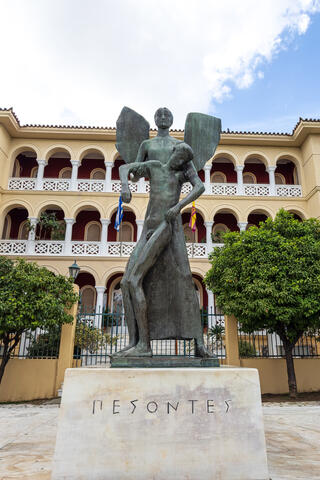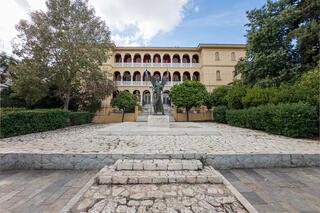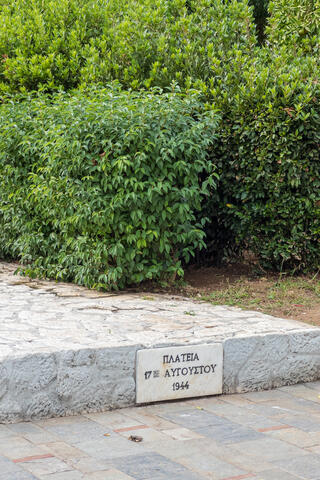SQUARE AUGUST 17TH 1944
(OSIA XENI)
SQUARE AUGUST 17TH 1944
(OSIA XENI)
An important chapter in the history of the Kokkinia blockade, which was one of the most brutal cleansing operations of the last year of the Occupation, was written in the historic square of Osias Xeni. Towards dawn on August 17, 1944, 3,000 Germans and their local collaborators - GIs and battalion commandos - stormed the town heavily armed. After 6:00 a.m., they call over the loudspeakers to the people in the central square: 'Attention! This is the security battalions speaking to you. All men from 14 to 60 years old are to go to the square of St. Xena for identity checks.
Those caught in their homes will be shot on the spot." Around 8:00 am, the square of St. Xeni and the surrounding streets were overflowing with people. Thousands of people gather and divide into groups of five with gaps between them, so that the hooded traitors can show who will be killed. The place of execution was the old inactive carpet factory in the city, a few meters away, where today stands the monument of the Kokkinia blockade mantra. The curtain of the tragedy was closed at 18:00 with the dismemberment of about 8,000 hostages, who were taken to the Haidari camp. From there, around 1,800 people were taken to the concentration camps in Germany, from where many never returned. On 24 September, 40 days later, the Germans struck Kokkinia again, shelling the assembled crowd after the memorial service in the same square, increasing the number of victims.
Today, the square is adorned by the Kokkinia Memorial to the Fallen, the work of George Zongolopoulos, which is the first memorial to the fallen of World War II in Greece, erected to commemorate the victims of a blockade and not the war victims of a city in general. It is the only memorial created in the post-civil war period at public expense at the site of a massive occupation blockade and not at a central, but neutral, point of a community.
It is a 3-meter-high brass complex depicting two human figures: a winged female figure bearing the fallen youth. The allegorical female figure symbolizes Victory or Glory (or in other words Greece) and the young naked man has the physiognomy and hairstyle of the 1940s, so that he can be spontaneously identified with the young men executed at the Blockade. The low pedestal bears the one-word inscription “PESODES”. It was erected in the square of St. Xeni on the twelfth anniversary of the blockade in August 1956. The Metropolitan Palace was also erected in the square of St. Xeni, which was inaugurated on 13 February 1972.
VIRTUAL TOUR
3D
MONUMENT RECONSTRUCTION




